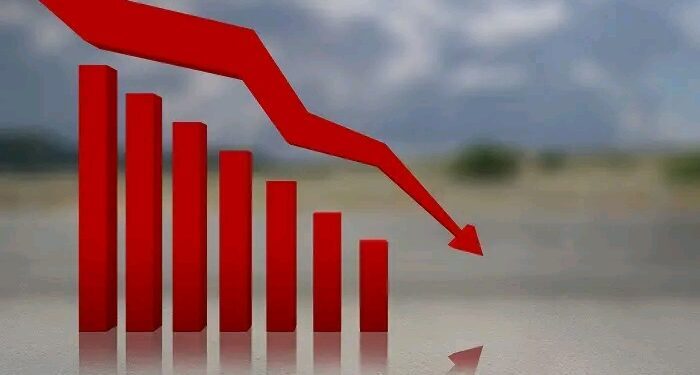Nigeria’s inflation is anticipated to experience a gradual decline, with analysts forecasting a year-on-year rate of 17.0-17.9% by November 2025. This positive outlook, shared by Stanbic IBTC analysts on Thursday, is based on two primary factors: beneficial base effects resulting from 2024’s elevated inflation levels and a stabilising macroeconomic environment.
If this projection holds, inflation could remain below 20% by October, marking a pivotal achievement in Nigeria’s ongoing struggle against persistent price increases that have burdened the economy for years.
However, the journey to a 17% inflation rate is unlikely to be straightforward. Short-term pressures are expected to persist through July and August, months typically characterised by peak flooding in southern Nigeria and a lean agricultural season in the north. These seasonal challenges often lead to food shortages and rising prices, with projections indicating that July’s inflation could range from 21.71% to 21.88%, easing slightly to 21.28% to 21.63% in August. Core inflation, which excludes volatile food and energy prices, is expected to remain stable at 1.1% to 1.3% month-on-month, buoyed by controlled energy costs and naira stability.
A significant variable emerges in December 2025 due to technical aspects surrounding Nigeria’s Consumer Price Index (CPI) rebasing. The rebased CPI indicated December 2024 inflation at 15.44% year-on-year, a stark contrast to the 34.80% under the previous series. This distortion could artificially inflate December 2025’s inflation to approximately 34% year-on-year if monthly inflation remains at -0.4%. Yet, if the National Bureau of Statistics employs the pre-rebased figure of 34.8% for comparison, year-end inflation may settle at a more manageable 22-23%.
The Central Bank of Nigeria now faces intricate policy decisions amid this outlook. The Monetary Policy Committee is likely to maintain rates during its July meeting, with potential easement only occurring in September if inflation trends affirm sustained moderation. Analysts predict a cumulative rate reduction of 150-200 basis points in late 2025, following an aggressive 875 basis point increase in 2024. The MPC might initially signal its dovish shift by narrowing the asymmetric corridor around the Monetary Policy Rate (MPR) from its current configuration of +500/-100 basis points.
Recent inflation data offers cautious optimism, as June 2025 figures reveal a consecutive monthly decline to 22.22% year-on-year from 22.97% in May. Nonetheless, underlying pressures are evident, with month-on-month inflation accelerating to 1.68% in June, up from 1.53% in May. Food inflation continues to exert pressure on overall prices, with monthly food inflation rising to 3.25% in June from 2.19% in May, particularly impacting staples like meat, tomatoes, and plantain flour.
Geographical disparities complicate the inflation landscape, with urban areas experiencing stronger price pressures (22.72% year-on-year) compared to rural regions (20.85% year-on-year). State-level variations are stark; Borno recorded inflation at 31.63%, while Zamfara saw just 9.90%. Food inflation extremes range from 47.40% in Borno to 6.21% in Katsina.
While the projected decline to 17% by November signifies notable progress, considerable risks remain. Food supply chains are susceptible to weather disruptions and security issues, while adjustments to fuel subsidies or electricity tariffs could reignite inflationary pressures. Global commodity price fluctuations and exchange rate stability will also be critical in determining whether Nigeria can achieve and maintain this disinflation trajectory.
For policymakers, the challenge lies in enforcing monetary discipline while addressing structural constraints in agriculture, transportation, and energy that perpetuate inflation. Although base effects may yield improved headline figures, enduring price stability will necessitate solutions extending beyond monetary policy alone. The forthcoming months will reveal whether Nigeria’s economy has genuinely turned a corner or if the anticipated improvement in November is merely a temporary respite within a prolonged inflationary cycle.











